
The Kvarner area is composed of 3 main areas:
- THE COAST – “The destination of tradition and rivieras” – an indented coastline, with its well known fishing vilages, mercantile and marine towns, famed holiday – making rivieras with an appealing hinterland containing fertile valleys and plateaus (Lovran, Opatija, Matulji, Rijeka, Kastav, Kostrena, Bakar, Kraljevica, crikvenica, Selce, Novi Vinodolski, Bribir, Hreljin, Cavle)
- THE ISLANDS – “The gates to the yachting heaven of the Adriatic” – an area of coastal limestone landscape, luxuriant Mediterranean vegetation, quiet concealed coves and long sandy beaches. (Krk, Cres, Losinj, Rab and a string of smaller islands: Unije, Ilovik, Vele Srakane, Prvic, Sv. Grgur, Goli…)
- THE MOUNTAINS – “An experience of gentle, unpolluted nature” – the region of Gorski Kotar, full of natural attractions, rivers, lakes, limestone caves, plant and animal life. (Delnice, Cabar, Vrbovsko, Ravna Gora, Mrkopalj, Fuzine, Lokve, Skrad, Brod Moravice)
Let’s dive into each of them with more details below:
Shores

Few kilometres from Opatija lays the town of Rijeka (roman Tarsatica). It is the administrative centre of the Zupanija primorsko – goranska region, and an important railway, road, air and maritime centre. It is said that the name Kvarner derives from the Latin Qua (te)_ rnarius that stays for the four approach routes to the gulf according to the cardinal points.
The main town of the region, with its shipyards, the harbour and the imposing building of the shipping and trading companies aligned along the shore, immediately reveals its industrious vivacity as well as its centuries old civilization. The Clock-Tower, the Roman gate in the Old City, the Baroque church of St. Vid and the cathedral of St. Mary testify that. and furthermore, splendid buildings in Baroque and neoclassical style, art galleries, museums and a beautiful Croatian National Theatre Ivan Zajc.
The Adriatic coast road that leads southward following the caprices of the shorelines, namely plateaus, precipies, deep inlets, small harbours and vast beaches, never stops to amaze us for the harsh beauty of the landscape. the small towns we shall be meeting will silently tell us about their history. THe walls of the fortress in Bakar and Kraljevica
(16th and 17th cent.) are the testimony of the power of counts Zrinski who, alike the Frankopans, have left everywhere traces of their rule and prestige.
Following the coast toward Crikvenica, which lays 14 kilometres further south, we past through Jadranovo and Dramalj. Than we meet Roman Ad Turres, later turned into Crikvenica from the vernacular “crikva” (church). The locality was the seat of a Pauline monastery built in 1412 by the ban Nikola Frankopan. when the hotel “Therapia” was built in 1895 the town got its spas and beaches. Today, Crikvenica attracts people who prefer quiet walks, fresh air and relax in the pine shadow as does the ones are looking for fun and active holidays.
We can stop in Selce, an attractive tourist location, or in Bribir, an ancient fortified town, The next stop can be in Novi Vinodolski, a birth place of the poet Ivan Mazuranic. Here we are welcomed by a luxuriant park and the ruins of the ancient castle in which, in the year 1288, the renowned Code of Croatian Customary Law was written. This riviera is of special interest for sportsmen amd for those who knows what a good holiday is.
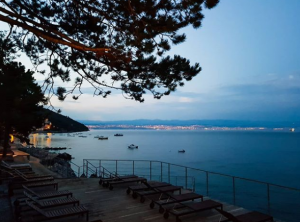
Few kilometres from Opatija lays the town of Rijeka (roman Tarsatica). It is the administrative centre of the Zupanija primorsko -goranska region, and an important railway, road, air and maritime centre. It is said that the name Kvarner derives from the Latin Qua (te)_ rnarius that stays for the four approach routes to the gulf according to the cardinal points.
The main town of the region, with its shipyards, the harbour and the imposing building of the shipping and trading companies aligned along the shore, immediately reveals its industrious vivacity as well as its centuries old civilization. The Clock-Tower, the Roman gate in the Old City, the Baroque church of St. Vid and the cathedral of St. Mary testify that. and furthermore, splendid buildings in Baroque and neoclassical style, art galleries, museums and a beautiful Croatian National Theatre Ivan Zajc.
The Adriatic coast road that leads southward following the caprices of the shorelines, namely plateaus, precipies, deep inlets, small harbours and vast beaches, never stops to amaze us for the harsh beauty of the landscape. the small towns we shall be meeting will silently tell us about their history. THe walls of the fortress in Bakar and Kraljevica
(16th and 17th cent.) are the testimony of the power of counts Zrinski who, alike the Frankopans, have left everywhere traces of their rule and prestige.
Following the coast toward Crikvenica, which lays 14 kilometres further south, we past through Jadranovo and Dramalj. Than we meet Roman Ad Turres, later turned into Crikvenica from the vernacular “crikva” (church). The locality was the seat of a Pauline monastery built in 1412 by the ban Nikola Frankopan. when the hotel “Therapia” was built in 1895 the town got its spas and beaches. Today, Crikvenica attracts people who prefer quiet walks, fresh air and relax in the pine shadow as does the ones are looking for fun and active holidays.
We can stop in Selce, an attractive tourist location, or in Bribir, an ancient fortified town, The next stop can be in Novi Vinodolski, a birth place of the poet Ivan Mazuranic. Here we are welcomed by a luxuriant park and the ruins of the ancient castle in which, in the year 1288, the renowned Code of Croatian Customary Law was written. This riviera is of special interest for sportsmen amd for those who knows what a good holiday is.
Islands
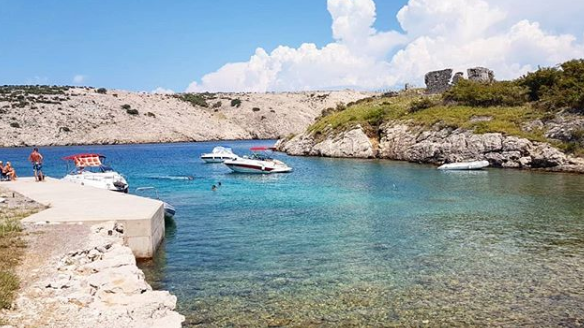
New contents are added to the variety of the tourist offer by the archipelago including the islands of Krk, Cres, Losinj, Rab and other smaller ones. Rich sacral-art and ethnological collections, monasteries and churches are waiting the art-lovers to discover them.
The nature gave a precious gift to the islands of Kvarner by giving them beautiful beaches, hidden in depths and clear sea. Here one can really experience a full contact with the sea- from bathing or diving to excellent sea-food, enriched with virgin olive oil, apices and aromas that give a renown Mediterranean tasyte. The people of the island always appreciated these gift from the nature. Now we also have a chance to enjoy them. The islands are now linked to the coast with the bridge (Krk), air (Krk and Losinj) and with ferry-boats.
The visit of the islands is an unforgettable expirience for the lovers of yachting, sailing, snorkelling and other water sports who can find here their own, “private” beach or can moor their boat in one of the marinas, that have all necessary services and equipment. Evening entertainment with music, festivals and other events will make the stay even more enjoyable.
In former times Krk was called “the golden island“.
The fascinating history of the ancient Kurikta (from which the name Krk is derived) emanates at every step: from the remains of the Roman Fulfinum as well as from the plain of Baska where one of the famous “Tablet of Baska“, written in ancient Glagolitic alphabet since. in the past, the island was the heart of the Glagolitic literature.
Yet, to know this island, one must visit the small town of Krk, which was the most important town of the island already in the period of the Roman Empire, or the other small town of Punat, situated in a large bay dominated by the islet of Kosljun, a real jewel with a monastery and a basilica on it that keep valuable sacred and ethnographic collection and paintings.
No one should leave the island without visiting middle age towns of Vrbnik and Dobrinj, and recent modern tourist centres Malinska, Njivice, Silo and others.
Numerous bays, sunny beaches, pine trees and forest make the island of Cres a destination for nature-lovers. Walking, trekking and mountain-biking are the best way to explore the island. You will come in touch with unspoiled nature and you may even see some of the rare species of birds. The lake of Vransko is another wonder of the nature. Its bottom is 61,5 meters beneath the sea, but the lake is the main water source on the island. There are small towns that must be visited. One of them is Osor (Apsoros), once a major town of the island Cres and nearby Losinj, and an important port of the route from the Upper Adriatic to Dalmatia. Than there are Valun and Lubenice, that is situated on the edge of the cliff, Martinscica and Punta Kriza.
The bridge over a narrow sea channel Kavanela links the island of Cres and the island of Losinj. This island has rich marine tradition. the towns of Mali Losinj and Veli Losinj and skilful masters from the island have set sail in all the seas of the world. The forests that cover the island, mild climate, mysterious bays and crystal clear sea were the main reasons for the archduke Karl Stephen to build his residence in Veli Losinj. so did the Austrian emperor Franz-Joseph, who build his Villa Karolina and the area is now one of the most attractive on the island.
Small and not heavy populated islands of the archipelago are true haven for those who prefer to be alone and who love quietness and tranquillity. Ilovik, the island of flowers and eucalyptus trees, Susak, with vineyard and fields carved into the sand, Unije, the island of olive trees and lush vegetation. There are also the island of Vele Srakane and Male Srakane.
The island of Rab with typical Mediterranean climate, protected from the winds by a Velebit Mountain is an island of lush Mediterranean vegetations and of other exotic plants. A 19th century Kormcar park, one of the most beautiful on the Croatian coastline, proofs that. The island has many beautiful bays such as Supetarska Draga and the beach as is the San Marino near Lopar, that can offer all the necessary comfort. The charm of the town of Rab with its loggia and four belfries towering like agave flowers suddenly sprouted from the cliff, also remains in the memory of those who visited it. Kampor, with the 15th century Franciscan monastery, Barbat and Banjolare some other towns on the island.
The Mountains – Highlands
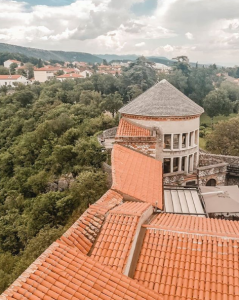 In the hinterland of the town of Rijeka and its varied coast a vast plateau called Gorski kotar rises, at first gently, than to the altitude of 1500 metres (Veliki Risnjak 1528).
In the hinterland of the town of Rijeka and its varied coast a vast plateau called Gorski kotar rises, at first gently, than to the altitude of 1500 metres (Veliki Risnjak 1528).
A tableland crossed by steep mountains ranges, slight slopes, pastures, lowlands and rushing rivers that alternate with clear small lakes.
And above everything the predominant green of fir-trees, silver firs and beeches.
Secular woods and, in their midst, masses of rock that nature has moulded creating gorges, caves, peaks, ridges, crests and precipies.
Rivers like Kupa and Dobra and an infinitude of torrents of all sizes break the silence that still reigns in these parts.
Sunny, fresh summers and harsh winters, abundant with snow, attract skiers, hikers, campers, sport fishermen and hunters who might even meet a bear, a lynx or a wolf.
Mountain bikers and hikers will find plenty, well-marked trails.
The traditional way of mountain life is still preserved in numerous farms and villages.
Hospitality and kindness of the people, that learned how to live with the nature, can be experienced all the time.
Besides the national park of “Risnjak” there are the towns of Delnice and Cabar, beautiful lakes in Lokve and Fuzine, canyons in Skrad and Vrbovsko, and towns of Ravna Gora, Mrkopalj and Brod Moravice.
Top Places in Kvarner
Rijeka
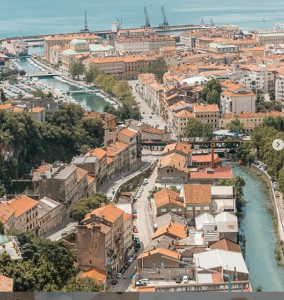 Rijeka is the economic, administrative and university center of the Kvarner region and the largest Croatian port. Situated at the intersection of maritime and land pathways, Rijeka is the city with the most favorable geographical position on the Croatian Adriatic coast. More than 50 percent of Kvarner’s inhabitants live in Rijeka. A rich cultural, dramatic and musical program is part of the Rijeka Summer Festival held in the areas of the Old City of Rijeka, Trsat, the Franciscan monastery and St. Vitus’ Cathedral.
Rijeka is the economic, administrative and university center of the Kvarner region and the largest Croatian port. Situated at the intersection of maritime and land pathways, Rijeka is the city with the most favorable geographical position on the Croatian Adriatic coast. More than 50 percent of Kvarner’s inhabitants live in Rijeka. A rich cultural, dramatic and musical program is part of the Rijeka Summer Festival held in the areas of the Old City of Rijeka, Trsat, the Franciscan monastery and St. Vitus’ Cathedral.
The vivid exciting past meets the turbulent present.
Rijeka, the largest Croatian port, maintains contact with the entire world daily. This modern exciting city with an old, wise heart rules sovereibnly and impressively over the Kvarner Bay.
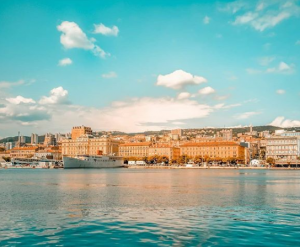
It does not matter whether you discover the rich history while walking along the city’s promenade, or you get carried away by the energy of a contemporary festival. rijeka is the pulsating heart of the Kvarner region being its trade, business, university and cultural center.
You can come here by plane, or you may chose to arrive by boat, or you may simply go by car, but you can take one thing for granted: you will encounter fascinating traditions, attitudes and atmosphere to which there are no limits.
Welcome to Rijeka! Rijeka is looking forward to warmly welcoming you as a visitors, a good friend or an old aquaintance.
The Tourism Association Office of Rijeka
Uzarska 14, HR-51000 Rijeka,
phone: 00385/51/213-145, 335-882, 051/213-149
fax: 00385/51/333-909, 214-706
Tourist Information Centre – Rijeka Tourist Board
The Opatija Riviera
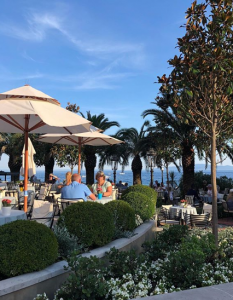
Opatija is the oldest tourist center on the Croatian Adriatic with a tourist tradition of more than 150 years. Opatija’s hotels and parks are the pride of the city and of Croatian tourism as well. Lovran, Ika, Icici, Moscenicka Draga and Volosko are spread across the Opatija Riviera like pearls on a necklace.
Aristocracy still shows us how to spend a luxurious holiday.
At the turn of the century, ruling European families rendezvoused in Opatija, which has always been the architectonic jewel of the Adriatic Riviera.
The city’s architecture was shaped by neo-classicism-ranging from a small villa to an impressive palace. Hotels and private holiday accommodations meet the expectations of the numerous internationbal vivitors, who appreciate a delicious cuisine and countles means of being enterained, along with the possibility to relax or to participate in various sports activities.
Surrounded by camellias, magnolias, palm trees, bamboos and other subtropical plants you will enjoy an imperial holiday atmosphere all year long.
Tourism Association Office of Opatija, Villa Angiolina
Park 1. maja 8, HR-51410 Opatija, Croatia
phone: 00385/51/271-710, fax: 00385/51/271-699
Opatija Riviera in Croatia – Visit Opatija
Crikvenica
Crikvenica has been a famous tourist destination as well as a summer and health resort for over a century. Its warm sea, long sand beaches and a beautiful landscape are what makes Crikvenica distinctive — a place where tourism on this part of the Adriatic has its origins.
You have barely arrived on the Crikvenica Riviera and all your everyday emotions seem to be left behind, as if they were out of reach, lying at anchor. In the shelter of the mountains you breathe in the mild, clean air and your gaze loses itself in the crystal clear water.
The sand on the beach tenderly warms your skin.
Relaxed, you realize: I feel at home here.
Kids are snorkeling, and you are strolling along the beach promenade surrounded by palm trees and lessly effort you conquer the way to the medieval castle. as you know, people living in small towns are not only hospitable and friendly, they are also excellent cooks, which you can experience every evening.
When it is time to say goodbye, you regret that you could enjoy only a small portion of the 2,500 hours of annual sunshine. You will surely come back here again.
Tourism Association Office of Crikvenica
Trg S. Radica 1, HR-51260 Crikvenica
phone: 00385/51/241-051
fax: 00385/51/241-151
The Novi Vinodolski Riviera
With its tourist tradition over a 118 year-old Novi Vinodolski is a summer resort with modern hotels, tourist settlements, camps, family villas and private accommodations.
A great deal of history is waiting here to be discovered by you: at one time the Romans relaxed in this enchanting region in the center of th Kvarner Bay at the foot of the slopes of Mala Kapela Mountains. Hundred years ago, when vacation time was called “summer freshness”, there were hotels here.
Nowdays, the motto is a sporty, modern holiday. Whether you travel by car, by train, by boat or by air (the Rijeka airport is only 25 km away!) you reach your holiday paradise quickly and comfortably.Are 22 kilometers of seaside with marvelous beaches enough for you? Or would your prefer to take a walk through the green Mediterranean parks? Campgrounds houses, private apartments and beautiful hotels will be most pleased to shelter you; a romantic town invites you to stroll around a museum, to visit a gallery or to go to restaurants where you can savor culinary delicacies.
The perfect place for people, for those who seek peace, and for all who simply want to enjoy life and leisure.
The Tourism Association Office of Novi Vinodolski,
Kralja Tomislava 6, HR-51250 Novi Vinodolski
phone + fax: 00385/51/244-306
Cres
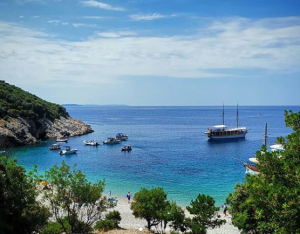
Cres is the right destination for true nature lovers. The best way to explore this island is by walking, bikeriding or mountaineering. The Vransko Lake is situated on Cres and is the main source of water on the island.
In the beginning there was a landscape: wooded in the north, olive groves and vineyards in the middle of the island, barren meadows in the south.
The romantic beauty of Cres Island shelters a nearly perfect healthy way of life and a tranquil rhythm of living. Surrounded by fences constructed of piled stones, sheep grazing peacefully, an elderly fisherman walking along the quay carring a fresh catch – one encounters a very special landscape. A new perspective can be gained by climbing up to the town of Lubenice. Once there, you can gaze out to the sea extending far into the horizon. The dark green of the wooded island merges with the deep blue of the sea. In this tiny universe of Cres Island where people have always been very close to each other, a visitors experience a very warm welcome. Sitting around the harbour area, listening to people playing music, or walking over thepeaceful mountains. You will be enchanted by the romantic beauty of Cres Island.
The Tourist Association of Cres
Cons 11, HR-51557 Cres
Phone: 00385/51/571-133, 574-127051/571-535
Fax: 00385/51/571-535
GORSKI KOTAR
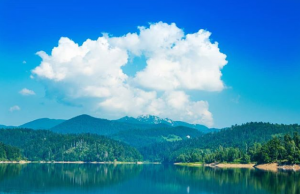
If you do not necessarily need the Alps, then you will be really satisfied by this mountain landscape. In the hinterland of the adriatic Riviera you will find widespread plateaus which bridge the gaps created by steep mountains, gentle slopes and wild ravimes.
Gorski kotar, the “green beauty”, is a secret tip for nature lovers wanting to relax; for landscape lovers wanting to take walking tours; for mountaineers and people who love hunting and fishing, and long for wide horizons.
Idyllic mountain lakes, babbling brooks and sprinkling waterfalls are on the agenda of the adventure trips though nature, as well as rare plants and tangy scents. In Risnjak’s National Park you will discover friendly animals right in the middle of carefully protected flora. All in one world: ” In the freshness of the dew you climb the mountains” and in the afternoon you go to the beach.
KVARNER Country Tourism Office
Park 1. maja 1-4, HR-51410 Opatija, Croatia,
Phone: 00385/51/272-988, fax: 00385/51/272-909
Ornithological Reserves
Island of Cres:
- Kruna (Merag – Beli)
- Podokladi (Orlec – Koromacno)
- Island of Prvic
- Island of Krk (Vrbnik – Baska)
The ornithological value of Kvarner is recognized at a European level, by the fact that these regions have been proclaimed, and placed on the list of, Important Bird Areas in Europe, alongside the bay of St. Euphemia on Rab.
These reserves have been established so as to preserve the nesting places of the Gyps fulvus, or griffon vulture. The population of about 100 parts nesting in colonies in these areas is species in that it nest on the cliffs directly above the sea, while elsewhere these are birds of the mountains and river canyons.
The wing span is almost 3 m, and it can plane for hours without flapping its wings. Organized birdwatching. information: tel. 051/840 525, 621 877, 571 161
Losinj
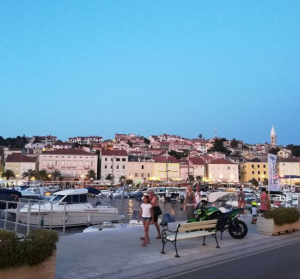
Dense pine woods, a mild climate, mystical bays and a crystal clear sea are the main reasons for coming here. Even the Austrian emperor Francis Joseph built a villa on Losinj.
Losinj is a flower paradise offering more than 2,700 hours of sunshine all year long for a fairy tale vacation.
The average air temperature in summer is about 25°C (78°F). And the bay areas are reserved just for you. You can enjoy the landscape even more through exciting sport activities such as tennis or sailing, or you may explore the island on an event-filled trip.
Or take a break and experience the underwater world!
Fish, corals and sponges keep the water crystal-clear and clean. Not only will the campgrounds, the apartments and hotels make you feel “at home”, you will also be enchanted by the hospitality of the pepple living there.
And you will enjoy yourself not only during the exciting and multifarious holidays but also in the evening when relishing the delicious dishes of the local cuisine in a cosy and comfortable restaurant. losinj is a dream that comes alive.
The Tourist Association of Mali Losinj
Riva losonjskih kapetana 29, HR-51550 Mali Losinj
Tel: 051/231-884
Fax: 0038551/231-547, 231-884
Krk
Krk is the largest and most developed island on the Croatian coast. The town of Krk is a museum-town and a treasury of Croatian culture. With its rich tourist offerings and good maritime connections with the neighboring islands of Cres, Rab and Losinj, it is a real lure for tourists.
Are you interested in Roman mosaics, old-Croatian churches or in the pictures of Venetians artist? Or are you attracted rather by romantic beaches and secluded bays?
Krk, the largest island in the Adriatic Sea, has even more unexpected and unusual secrets to be discovered. Allow yourself to be enchanted by the much-praised hospitality of the Islanders, as in the small town of Punat or Baska, for instance.
Breathe in the tangy sage and juniper air. take a walk through the karstic rocks or along a pebblestone beach offering crystal clear water. Stop by at a vineyard where those fine vintage wines are made, which you can savor during a friendly get-together in the evening; or watch a folk dance and “klappa”-singing.
Or perhaps you are a surfer? The summer breezes will delight you. Wild landscapes and people will welcome you warmly. Those will be special holidays spent on the “golden island”.
The Tourist Association of Krk
trg Sv. Kirina 1,
HR-51500 Krk,
phone + fax: 00385/51/221-359, 051/221-414
Rab
It is said that Rab is a city that “has chosen its geographical position”. Rab is a city of sun with approximately 3000 sunny hours per year.
The north-eastern part of Rab Island is rather barren and the wind has it in its iron grip.
The green side of the island, however, is situated on the leeward side. And on the south-western coast you will find dense pinetree forests. The fact that the sun, the clean air and the scent of the blooming vegetation enchant you upon your arrival, make the island one of the favourite holiday paradises of the Kvarner region.
Numerous sport activities, from tennis to volleyball, to bowling or boccia, keep the visitors busy all day long. It is beautiful here. Gothic palaces, renaissance facades, picturesque churches and proud bell towers shape the countenance of beautiful towns.
An exceptional jewel is the medieval tiny town of Rab, where you can stroll about for hours, failing in love over and over again with all the enchanting treasures.
Ancient Greeks and Romans loved this place. Why shouldn’t you enjoy it too?
The Tourist Association of Rab
Donja ulica 2, HR-51280 Rab,
Tel: 051/724-064
phone + fax: 00385/51/724-064
Risnjak
Risnjak National Park is known for its exceptional and almost brutal beauty, white rocks, deep canyons and woods which are hundreds of years old.
National Park (Crni Lug, Delnice) 6,400 hectares of exeptional forest, ten forest communities, a learning trail 3,800 long, a mountain lodge.
The Risnjak National Park Board, Tel: 051/836-133 , Telephone: 051/836 133, 812 156
Bijele and Samarske Stijene
strict nature reserve (Mrkopalj) 1,1176 hectares a unique area of gigantic natural limestone sculptures surrounded by forest.
Telephone: 051/833 225, 833 248
Vrazji Prolaz (The Devil’s Pass) and Zeleni Vir
geo – morphological reserve (Skrad) A pass via paths and little bridges between steep cliffs, above the widdly foaming mountain stream of Jaska and a waterfall 90 m high, above the cavern and source Zeleni Vir.
Tel. 051/810 665, 810 680
THE LOKVARKA CAVE (Lokve)
The fascinanting beauty and richness of this cave was discovered in 1912. It is 1,200 m long, has a path and electric lighting, with guided tours.
Tel. 051/831 278, 831 250
THE ISLAND OF SUSAK
A unique island of loess deposits and very unusual folkways.
Telephone: 051/231 547, 231 884
VRANSKO LAKE (Island of Cres)
A hydrographic phenomenon, a natural reservoir into which rainwater drains via surface and subterranean routes from the coastal area; the level of the lake is 13 m above the sea, and its greatest depth is 60 m below the level of the sea.S It has 2,3 million m³ pf potable water.
Tel. 051/571 535, 840 525
Dolphin Habitats
In the area around the Kvarner islands, especially in the area of Cres and Losinj there is a resident population of about 150 dolphins (tursiops truncatus, bottle nosed dolphins). As well as this kind there also some small dolphin which can occasionally be seen; they are markedly, less numerous in the Adriatic than they used to be, and are on the list of species endangered European species.
Tel. 051/236 348, 840 525, 621 877
Forest Vegetation Reserve Dundo (Rab)
Tel. 051/724 064
Forest Parks
- Komrcar: Tel: 051 724 064
- Opatija Park: Tel: 051 271 310, 271 710
- Cikat (Mali Losinj): Tel: 051 231 547, 231 884
- Golubinjak (Lokve): Tel: 051 831 278, 831 250
- Lisina (Ucka, Opatija): Tel: 051 271 310
A County of Gorgeous Bays and Beaches
- The beaches at Medveja, Moscenicka Draga, Crikvenica, Novi Vinodolski, Baska, Lopar, Mali Losinj.
- ALSO WORTHY OF SPECIAL MENTION:
Mt Ucka Tel: 051 271 310, 271 710 and Bjelolasicai (Tel: 051 833 225), in the process of being proclaimed a Nature Park! - The Canyon of Kamacnik (Vrbovsko)
Tel: 051 875 106 - The Kupa Spring and Valley
Tel: 051 812 156, 836 133 - Lokvarsko, Bajer and Lepenica Lakes
Tel: 051 831, 835 768
Marinas
- ACI Marina Cres, Jadranska obala 22,
Tel. 051/571-622 - Marina Opatija, Icici,
Tel. 051/271-740 - ACI Marina Supetarska Draga, Rab,
Tel. 051/776-268 - ACI Marina Rab,
Tel. 051/724-023 - ACI Marina Admiral, Opatija,
Tel. 051/271-288 - Marina Klimno, Punat, Krk,
Tel. 051/654-111 - Marina Punat, Krk,
Tel. 051/654-111 - Marina Mali Losinj,
Tel. 051/231-626 - Marina Nerezine, Biskupija bb,
Tel. 051/237-033
Animal Life
KVARNER represent in miniature everything that the nature of Croatia means for Europe. It is an area of exceptional biological diversity. Here in a small area mingle species of plants and animals and typical habitats of central Europe, the alps, the limestone of the Dinarids, of the western and eastern Mediterranean.
Of the 114 species of birds that are considered endangered at a European level 83 (73%) of them come to Kvarner, with even 30 of them nesting in Kvarner. In this region nest the golden eagle, arrier eagle, the long eared owl, the peregrine falcon, the griffon vulture and others.
In KVARNER live 73% of the amphibians and 87% of the reptiles in Croatia. The islands of Krk, with 30 indigenous species of amphibians and reptiles is the island that has the greatest number of these animal groups in the whole of the Medirerranean. The island of Cres is in third place, immediately after the much bigger Sardinia. Altogether in the County there are 14 kinds of snake, which shows that there are habitats that are still ecologically preserved.
As for mammals, 81 species live here, which is two thirds of the entire number of mammals in Croatia. Of particular interest is that all the large predators in Europe are represented here. In the forest of the mountain and coastal regions there are still about 120 bears and 30 wolves, 35 lynxes, a dozen jackals, 40 wild cats, a large number of badgers, foxes, pine martens and stone martens, 900 red deer, 1200 roe deer, 100 chamois, and alongside the clean rivers of the mountains a score of otters. At the very source of the river Kupa about 500 butterfly species have been
found.
In terms of numbers of mammals, the islands of Krk, Rab and Cres are, as compared with their size, the richest islands in the Mediterranean. The Mediterranean monk seal was scientifically described for the first time on the basis of an example caught off the island of Cres, and they were observed in the seas off the island of Pag up till a few years back.
Kvarner also has only resident population of dolphins in the northern Adriatic.
The Flora
There are over 2,700 species, and this makes the area among the richest regions for flora in Croatia.
In the whole of Croatia there are some 4,700 known plant species, and of these some 70% are found in the County.
Some of the islands of Kvarner (Krk, Cres and Losinj) with their total number of 1,300 plant species exceed the total number of species of some countries in Europe. Plant species are most numerous on Krk, which has about 1,500, and the island of Unije is the richest in proportion to size, with 629 species of plants on its 16 km². Of the 226 rare, endangered and vulnerable
plant species noted in the Red Book of Plant Species in Croatia, 122 grow in Kvarner.
Culture Heritage
OPATIJA
A fashionable place for all year round holiday-making with hotels that are valuable architecturally speaking as well, with the beauty of being well adapted to both the sea and the luxuriant vegetation. There is a renowned park, the famed lungo mare, coastal walk, 12 km long, the whole of the lenght of the Riviera, from Volosko to Lovran.
info: tel. 051/ 271 310, 271 710
GLAGOLITIC
Glagolitic is the name of the oldest script used in Slavic languages. It was developed in the 9th century, particulary so in the region of Kvarner. The older, rounded, and the newer, angled forms of
Croatian Glagolitic are different. It was not only ecclesiastical and ritual writings that were done in Glagolitic, but also texts from everyday life and legal documents as well (the Vinodolski, Vrbnicki and Krcki Codices). There is a unique exhibition of Glagolitic in the University Library, Rijeka (Tel: 051 336 901) and in the Lapidarium, or collection of stone monuments, in Valun (including the well known Valun Tablet, the island of Cres, tel. 051 535 084) as well as in the Porat Monastery (Malinska, island of Krk, Tel: 051 859 579).
BASCANSKA PLOCA – – THE BASKA INSCRIPTION
(Jurandvor – Baska, island of Krk) One of the oldest monuments of the Croatian language, carved in stone (ca 1100). It is written in a script of the transitional type, between rounded and angular
Glagolitic. It contains data about the buildings of the Church of St Lucy and a record deed of gift of the Croatian King, Zvonimir.
tel. o51/ 856 817
KVARNER CARNIVAL
The long, well-known carnival tradition (carnival, lent, masquers, masks). There are special customs in January and February in almost every spot in the Kvarner region. One of the biggest and
most typical of European carnivals is the Rijeka Carnival, with its thousand of masked individuals,groups and allegorical floats with over 120,000 spectators. The traditional masks are presented by the Zvoncari, Ringers, impressive “dancers” dressed in sheepskins with ram’s horns (the Ringer’s Review takes place in Matulji). There is the Balinjerada too, and the international Children’s Carnival in Opatija, and maskers in Crikvenica and Novi Vinodolski, on the island and in Gorski Kotar.
- Rijeka Carnival, tel. 051/ 213 145, 335 882
- Ringer’s Review tel. 051/ 274 114
- Balinjerada and Children’s Carnival tel. 051/ 271 710
- Crikvenica tel. 051/ 241 051
- Novi Vinodolski tel. 051/ 224 306
TRSAT – SHRINE OF OUR LADY (Rijeka)
One of the oldest shrines in the world, where from 1291 to 1294 the famed Holy House of Nazareth was kept. A renowned Franciscan monastery with a valuable treasure-house and art gallery, a church with votive gifts. Particulary valuable is the Trsat Staircase; 501 stairs take the pilgrims from the centre of town to the votive church.
info: tel 051/ 217 018, 335 882
GROMACE
The oldest and most enduring feature of popular architecture in Croatia. They are made of rough stone provided by nature herself. Gromace, dry stone walls, are the borders of pasturelands, and protection given by the farmers to their cultivable land. The walls transform and humanize the elemental landscape. They extend all along the whole of the coastal and island part of Kvarner.
MUSEUMS / GALLERIES / COLLECTIONS
Museums
- The Maritime and Historical Museum of the Croatian Coast
(tel. 051/ 335 772) - The Museum of the City of Rijeka
(tel 336 711) - The Natural Science Museum, Rijeka
(tel. 051/ 334 988) - The Modern Gallery
(tel. 051/ 335 235)
Treasure houses
- Cathedral of St. Vitus
(tel. 051/ 226 627) - Parish Church of St Theresa of Aquileia, Ravna Gora
(tel. 051/ 818 437) - Sacral items of the Church of St Justine, Rab
( tel. 051/ 724 195) - Sacral items in Bribir
(Tel: 051 248 006) - Sacral items in Osor Cathedral, Osor
(tel. 051/ 237 112)
Ethnological or Folk Museums, Cultures, Exbitions
- Moscenice (tel. 051/ 737 551)
- Islet of Kosljun (Island of Krk, Punat) (tel. 051/ 854 017)
- Dobrinj (Krk, tel. 051/ 848 344)
- Baska, Krk ( Tel: 051 856 817)
- Kastav (tel. 051/ 691 452, 691 330)
- Novi Vinodolski (tel. 051/ 244 266)
- Cabar (tel. 051/ 821 042)
- Lic (tel. 051/ 835 758)
- Bakar (tel. 051/ 781 531)
- Osor (Cres)(tel. 051/ 840 525)
- Rab (tel. 051/ 771 111)
- Rijeka – Cathedral of St. Vitus
- Kosljun Monastery
Famous Libraries
- Islet of Kosljun (Krk, Punat) (Tel: 051 854 017)
- Vrbnik (Krk) (Tel: 051 857 333)
Galleries
- Mali salon, Rijeka (Tel: 051 333 548)
- Julije Klovic, Rijeka (tel: 051 332 494)
- Fra A. Testena (Rab) (Tel: 051 771 111)
- Vilima Svecnjaka (Cabar) (Tel: 051 821 042)
- Stara Skola (Old School), (Selce) (Tel: 051 782 127)
- Turnac, Novi Vinodolski (Tel: 051 244 306)
- Turska Kuca (Turkish House) (Bakar) (Tel: 051 761 531)
- Knezev dvor (Prince’s Mansion), (Rab) (Tel: 771 111)
- Tos, Punat (Tel: 051 854 970)
Archaeological Collections
- Rijeka (Tel: 051 335 772)
- Osor (Island of Cres) (Tel: 051 237 007)
See more on Kvarner.hr – The Kvarner County Tourism Office – Tourism
